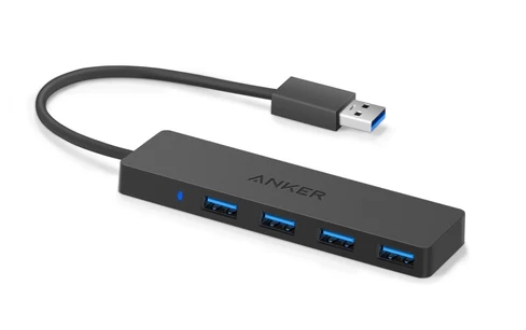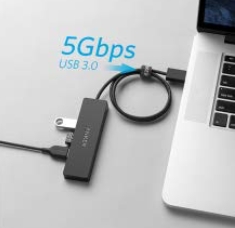
USB ports are the unsung heroes that keep our devices connected and functional in the world of technology. Among the various USB standards, USB 3.0 stands out as a significant upgrade over its predecessor, USB 2.0. The comparison of usb 2.0 vs 3.0 highlights faster data transfer speeds, improved power management, and backward compatibility, making USB 3.0 a staple in modern devices. Whether you're transferring large files, charging multiple devices, or setting up a workstation, USB 3.0 offers the performance and reliability you need. In this article, we’ll explore the key features of USB 3.0, how it compares to USB 2.0, and why it’s a smart choice for both personal and professional use.

How Fast is USB 3.0 Compared to USB 2.0?
Data Transfer Rates Up to 5 Gbps
One of the most notable improvements in USB 3.0 is its data transfer speed. While USB 2.0 maxes out at 480 Mbps, USB 3.0 can achieve speeds of up to 5 Gbps—more than ten times faster. This makes a significant difference when transferring large files, such as high-resolution videos or extensive datasets. For example, if you’re a photographer transferring RAW images from your camera to your computer, USB 3.0 can save you considerable time compared to USB 2.0. Anker’s Ultra Slim 4-Port USB 3.0 Data Hub is designed to take full advantage of these speeds, ensuring fast and efficient data transfer for all your devices.

Improved Signal Quality and Reduced Latency
In addition to faster speeds, USB 3.0 also offers improved signal quality and reduced latency. This means that data transfers are not only faster but also more reliable, with fewer errors and interruptions. For instance, if you’re backing up important files or streaming high-resolution video, USB 3.0 ensures a smooth and seamless experience. The reduced latency is particularly beneficial for tasks that require real-time data processing, such as video editing or gaming. By upgrading to USB 3.0, you can enjoy a more efficient and reliable data transfer experience.
How Does USB 3.0 Improve Charging and Power Management?
Increased Power Output for Faster Charging
USB 3.0 not only improves data transfer speeds but also enhances power management. With an increased power output of up to 900 mA, USB 3.0 can charge devices faster than USB 2.0, which maxes out at 500 mA. This is particularly useful for charging smartphones, tablets, and other portable devices. For example, if you’re using an USB 3.0 hub, you can charge multiple devices simultaneously without compromising on speed or efficiency. This makes USB 3.0 an ideal choice for both home and office setups, where multiple devices often need to be charged at the same time.
Lower Power Consumption for Connected Devices
Another advantage of USB 3.0 is its lower power consumption. When devices are idle, USB 3.0 reduces power usage, which helps extend battery life and reduce energy costs. This is especially beneficial for laptops and other portable devices that rely on battery power. For instance, if you’re using a USB 3.0 hub to connect peripherals like a mouse and keyboard, the reduced power consumption ensures that your laptop’s battery lasts longer.
Can USB 3.0 Work with Older USB Ports?
How USB 3.0 Adapts to USB 2.0 and 1.1
One of the key features of USB 3.0 is its backward compatibility with older USB standards, such as USB 2.0 and USB 1.1. This means that you can use USB 3.0 devices with older ports, although at reduced speeds. For example, if you have an older laptop with USB 2.0 ports, you can still use a USB 3.0 flash drive, but the transfer speeds will be limited to USB 2.0 levels. This backward compatibility ensures that you can continue using your existing devices while gradually upgrading to USB 3.0.
Compatibility with Existing Cables and Accessories
In addition to backward compatibility with ports, USB 3.0 is also compatible with existing USB cables and accessories. This means that you don’t need to replace all your cables and peripherals when upgrading to USB 3.0. For instance, if you have a USB 2.0 external hard drive, you can still use it with a USB 3.0 port, although the transfer speeds will be limited to USB 2.0 levels. Anker’s USB 3.0 hubs and adapters are designed to support a wide range of devices, ensuring that you can make the most of your existing setup while enjoying the benefits of USB 3.0.
How Reliable is USB 3.0 for Data Integrity and Error Handling?
Streamlined Data Transmission with Error Detection
USB 3.0 incorporates advanced error detection and correction protocols, ensuring that data is transmitted accurately and reliably. This is particularly important for tasks that require high data integrity, such as backing up important files or transferring sensitive information. For example, if you’re transferring financial data or medical records, USB 3.0’s error detection ensures that the data remains intact and uncorrupted. Furthermore, the enhanced bandwidth of USB 3.0 allows for quicker transfers, reducing the time spent waiting for large files to move. As a result, users can work more efficiently, knowing their data is secure and accessible when needed.
Reduced Data Loss with Advanced Protocols
In addition to error detection, USB 3.0 also features advanced protocols that reduce data loss during transmission. This is achieved through improved signal quality and reduced latency, which minimize the risk of data corruption or loss. For instance, if you’re streaming high-resolution video or transferring large files, USB 3.0 ensures that the data is transmitted smoothly and without interruptions. By choosing USB 3.0, you can enjoy a more reliable and efficient data transfer experience, whether you’re at home or in the office.
Conclusion
USB 3.0 offers a range of features that make it a smart choice for modern devices, from faster data transfer speeds and improved power management to backward compatibility and reliable error handling. Whether you’re transferring large files, charging multiple devices, or setting up a workstation, USB 3.0 provides the performance and reliability you need. Anker’s Ultra Slim 4-Port USB 3.0 Data Hub is a prime example of how USB 3.0 can enhance your connectivity experience, offering fast data transfer, efficient power management, and compatibility with a wide range of devices. By upgrading to USB 3.0, you can enjoy a more efficient, reliable, and future-proof setup for both personal and professional use.